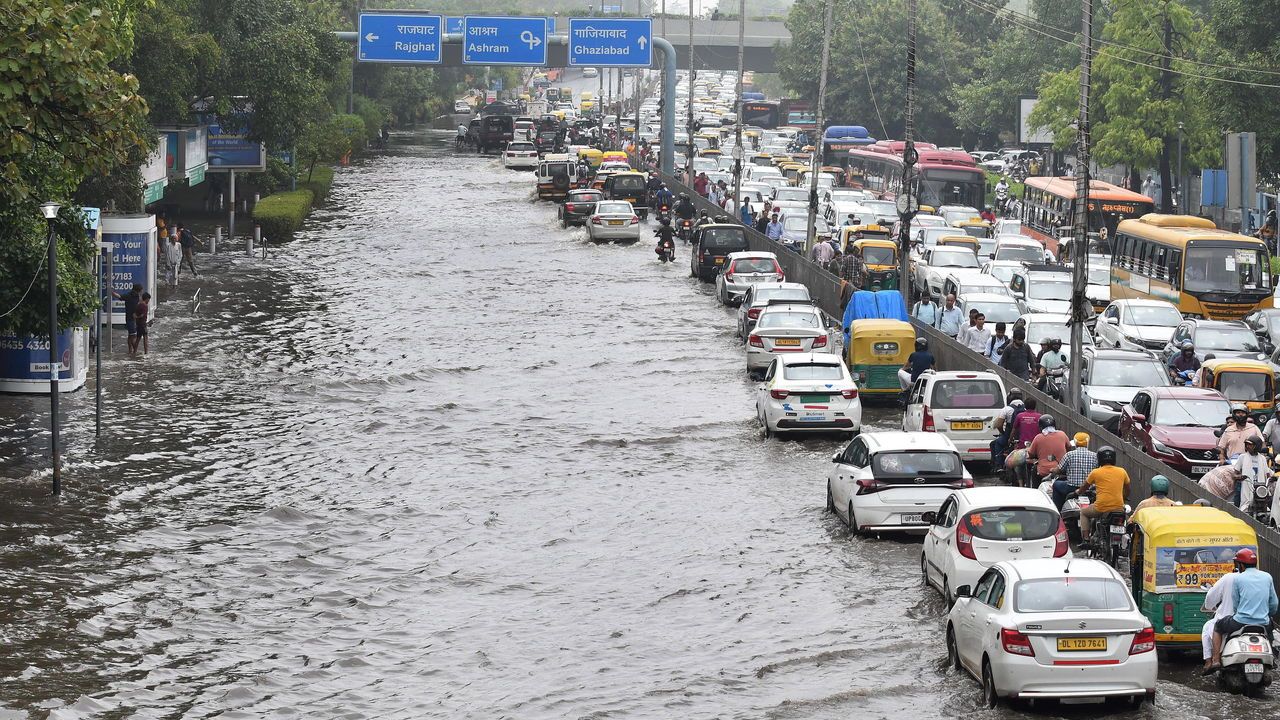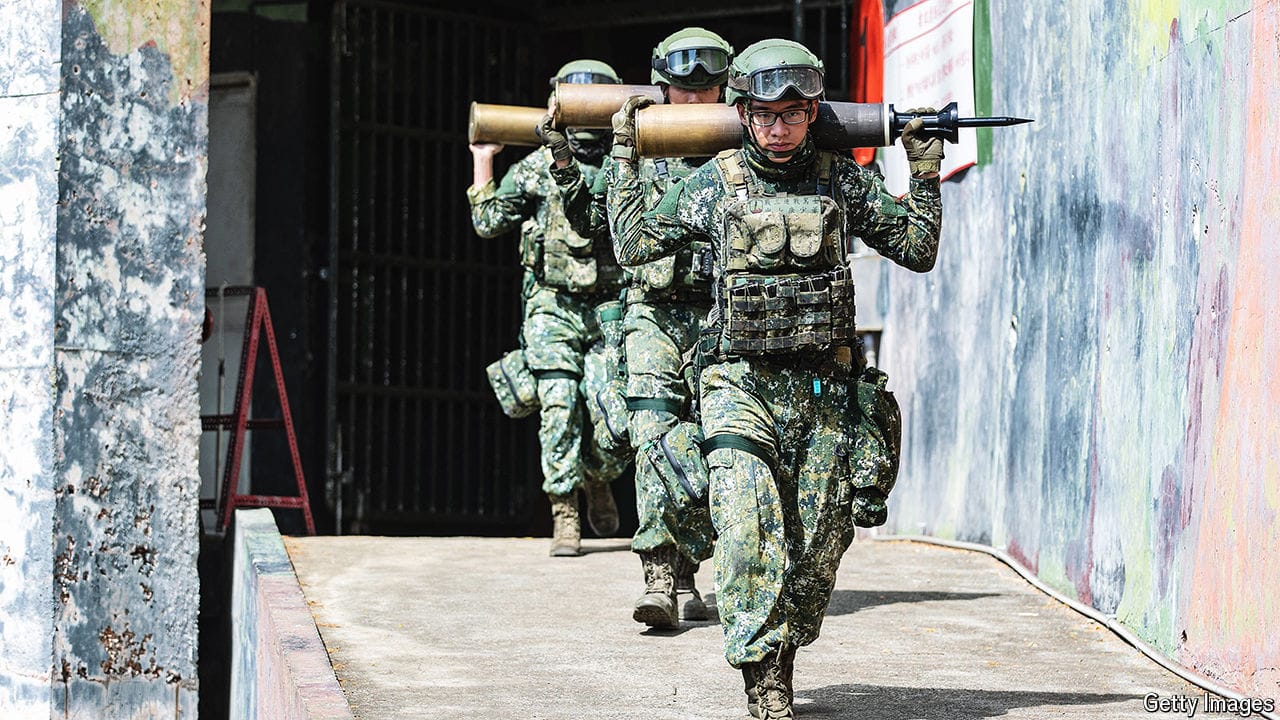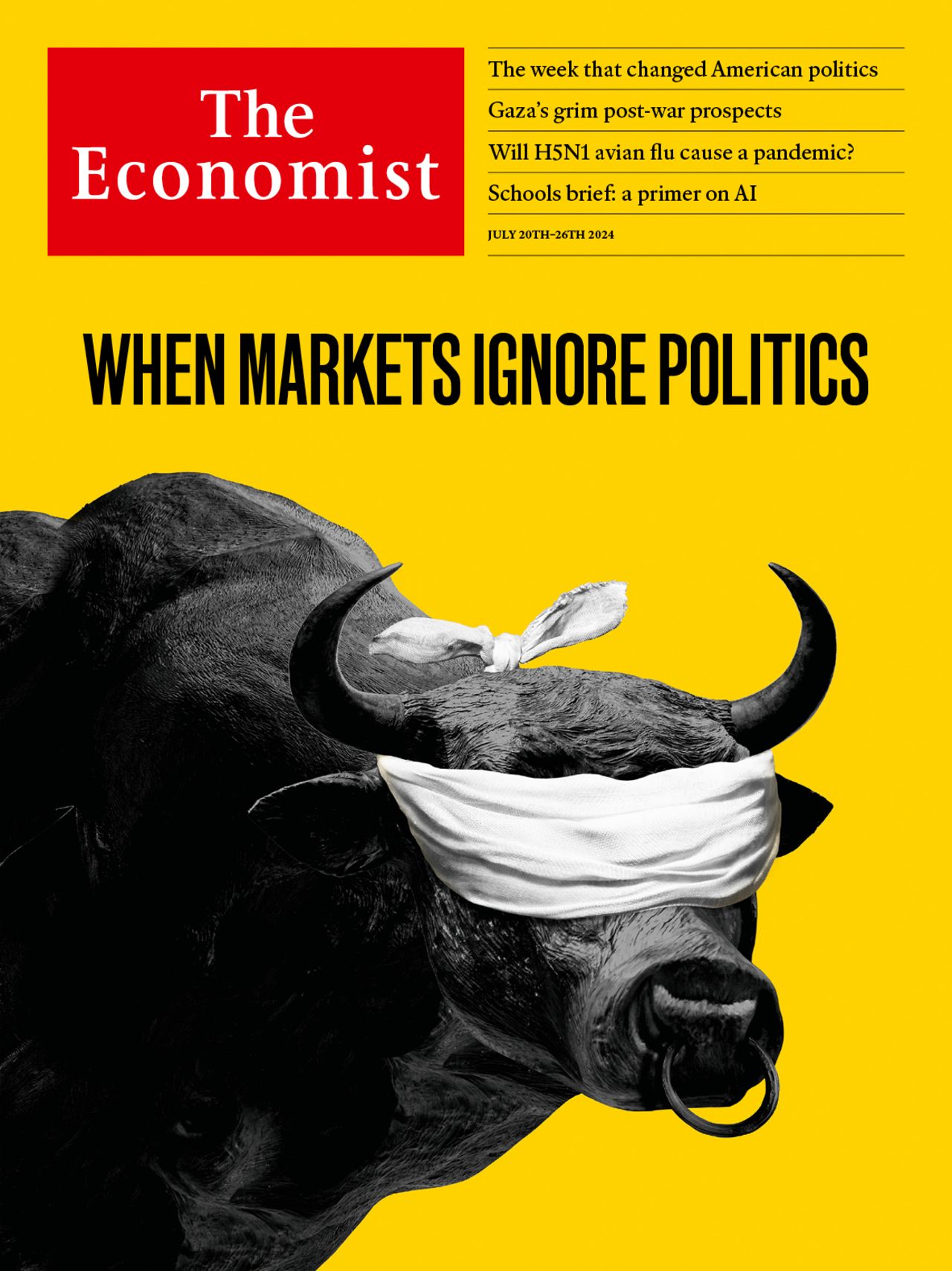Climate change is making the monsoon more dangerous
People in South Asia and India can expect more extreme weather

IN THE EARLY hours of June 28th your correspondent was woken by an almighty crash of thunder. The other side of the street had vanished behind a wall of water: the monsoon had arrived in Delhi. By the end of the day, 23cm of rain had fallen on India’s capital, three times more than it usually gets in the entire month of June, making it the rainiest 24 hours since 1966. The forecourt roof of a recently refurbished airport terminal collapsed, killing a taxi driver. Ten more people died in “rain-related incidents”.
People in parts of India and South Asia can probably expect more days like this. Since the middle of the 20th century the number of “extreme rain days” (defined as more than 150mm of precipitation in 24 hours) in India has gone up. Global warming appears to be making the monsoon more variable. And as temperatures rise further, the monsoon’s extremes could become more damaging.
Explore more
This article appeared in the Asia section of the print edition under the headline “Too much and not enough”
More from Asia

America recreates a warfighting command in Japan
The threat from China hastens the biggest military transformation in the Pacific in decades

Taiwan is beefing up its military exercises to counter China
The island’s new defence minister wants more practice and less performance

Sheikh Hasina faces her biggest crisis in years
Bangladesh’s prime minister shuts down the country
A weakened Narendra Modi subsidises jobs and doles out pork
The prime minister has had to compromise after a disappointing election
Is this a new age of warrior Japan?
The country is spending more on its armed forces. But not everyone is on board
The epic bust-up between China and India could be ending
Witness calm in the Himalayas, diplomatic charm offensives and thickening trade links
